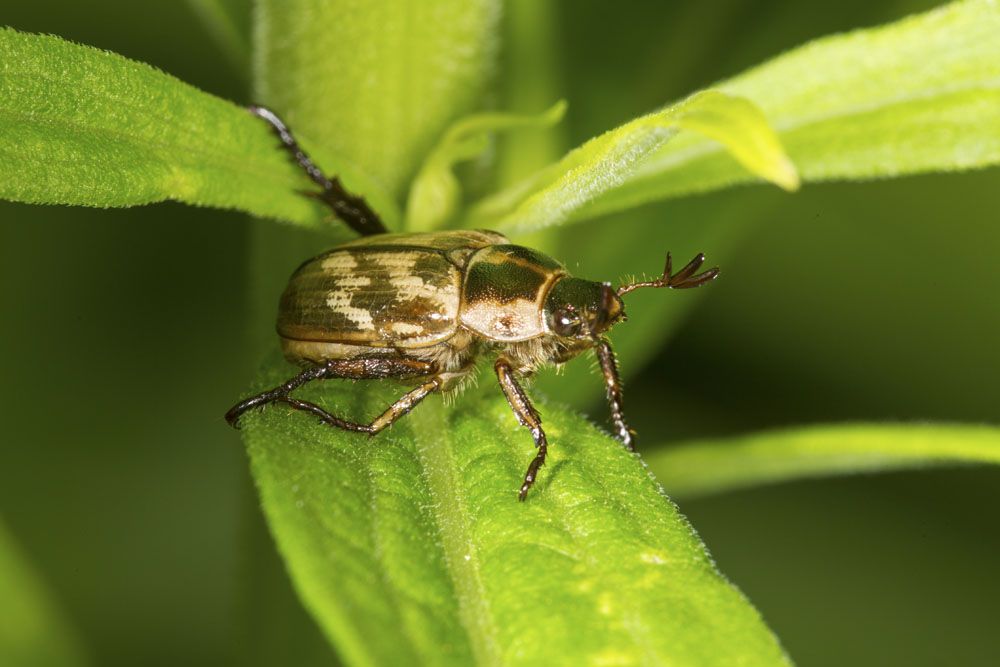
Orientale Beetle – Exomala orientalis
Orientale Beetle (Exomala Orientalis)
Common Name: Orientale Beetle
Latin Name: Exomala Orientalis Waterhouse
Appearance:
Oriental beetle grubs are nearly identical to Japanese, being C-shaped white grubs that grow almost 34 inches long. They may be detected, however, by parallel rows of setae visible only with a hand lens on the raster.
Larva/Nymph:
15mm to 20mm in length Scarabaeiform c-shape, white and grub-like. Tan-brown head, six legs, and a brown abdomen tip. The pattern of hairs on the ventral side of the 10th abdominal segment distinguishes the species.
Adult:
The length ranges from 8mm to 12mm. Mottled, straw-colored to metallic brown or black, with various patterns on the thorax and black bands on the elytra (outer wings).
Pupa:
The pupa is brown and wrinkled at 10mm in length.
Host plant:
Feed on grassroots, ornamental plants, maize, pineapple, sugarcane, strawberries, and many vegetable crops.
Territory:
This genus is indigenous to Asia. It was first introduced in North America.
Damages caused by Orientale Beetle:
Adults nibble on Dahlia, Iris, Phlox, and Roses bloom without causing major damage. The larvae feed on roots at the soil’s surface, causing considerable damage and death.
Life history and habits:
The oriental beetle has a one-year life cycle throughout much of its habitat. Further south, adults emerge one to two weeks early. After emergence, they eat and mate. Adult females dig into the earth to a depth of 2-4 inches after mating and lay eggs. A female can enter the soil multiple times and lay several eggs each time. Females prefer to access the ground and deposit eggs in well-watered grass, although they may also be found in drier areas. Grubs will eat vigorously for 4-5 weeks before transitioning to the pupal or resting stage. Insects remain in this stage until they transition into adult beetles in mid-to-late June or early July when adults emerge and the cycle begins again.
